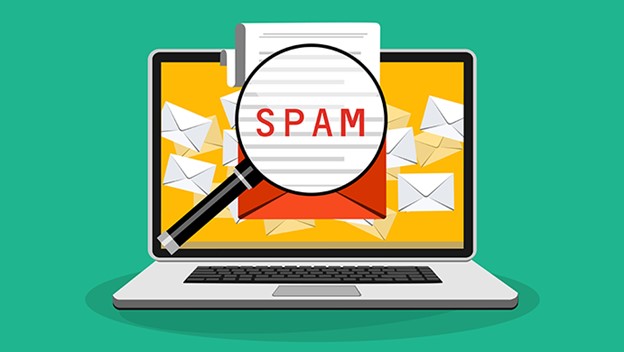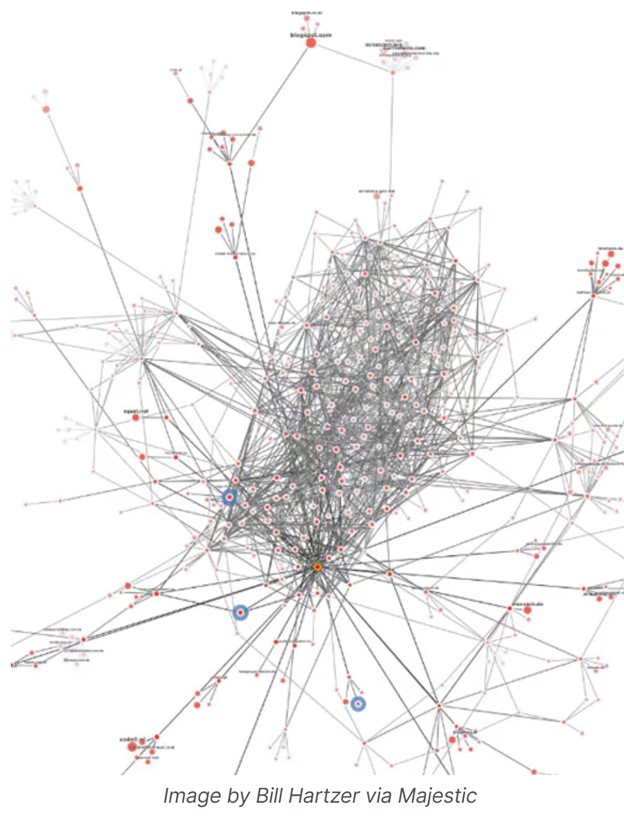14 min to read
Spam - that pesky, unwanted mass of messages that clutters your inbox. It's not just a nuisance - it is a pervasive issue with far-reaching consequences. It is important to understand the intricacies of spam and how it can be eliminated. We have been impacted by an increase number of SPAM in our inboxes, and even "people" pretending to be part of Codedesign. Don't trust anyone online, that is the rule. We've been considering internally about writting about it? Or let it fall into forgetting.
CodeDesign is a leading digital marketing agency ranked #1 in Lisbon, Portugal. You could work with us to accelerate your business growth.
The Risks to Your Security
In addition to the irritation of sorting through countless irrelevant messages, spam poses significant security risks. To avoid risk, stop spam by removing your digital footprint through proactive measures such as implementing strong spam filters, regularly updating your security software, and exercising caution when sharing personal information online. Malicious attachments, phishing links, and malware-laden content are often hidden in these seemingly harmless emails.
The Mechanism Behind Spam
Spam isn't a result of chance - it's a well-orchestrated strategy by spammers. These individuals or entities employ various techniques, from email harvesting to automated bots, to flood your inbox with irrelevant content. Understanding these mechanisms is crucial in developing effective countermeasures. It's not merely a nuisance - it's a sophisticated game of cat and mouse between spammers and cybersecurity experts.
Email Harvesting Techniques
Spammers employ sophisticated methods to collect email addresses, often scraping websites, forums, and social media platforms. This information is then compiled into massive databases, ready to be exploited for mass email campaigns. Your seemingly innocuous online activities may inadvertently contribute to this web of data collection, making awareness of your digital footprint crucial.
Automated Bots and Scripts
Automation lies at the heart of spam propagation. Bots and scripts, designed to mimic human behavior, can generate and send vast volumes of emails in a short span. These automated processes enable spammers to cast a wide net, targeting thousands or even millions of users simultaneously. As technology evolves, so do these bots, becoming more adept at bypassing traditional filters.
Spoofing and Deceptive Tactics
Spam isn't always blatant. Spammers frequently employ tactics like email spoofing, where they forge the sender's address to appear legitimate. This deceptive practice can trick users into opening seemingly trustworthy emails, increasing the chances of falling victim to phishing attacks or downloading malicious content. Recognizing these subtle tactics is essential in maintaining a secure online presence.
Impact on Productivity
Spam isn't just about potential threats - it's a drain on your productivity. Every minute spent sifting through spam is a minute taken away from meaningful tasks. In a professional context, this can result in lost opportunities, missed deadlines, and decreased overall efficiency. Acknowledging the productivity implications of spam underscores the need for robust filtering systems and user awareness to maintain a streamlined digital experience.
The Global Scale of Spam
Spam isn't a localized issue - it's a global phenomenon with economic consequences. Businesses lose significant resources combating spam, implementing advanced security measures, and dealing with the aftermath of successful attacks. The global economy takes a hit, as the costs of cybersecurity incidents ripple through industries. Understanding the broader impact emphasizes the collective responsibility to address spam as a community.

Spam isn't merely an inconvenience - it's a multifaceted problem with wide-ranging implications. From its intricate mechanisms to the potential threats it poses to your security and productivity, spam demands your attention. Recognizing the global scale of this issue is the first step toward fostering a safer, more efficient digital environment.
How a Digital Agency Can Shield Your Brand from Spam: Insights and Strategies
Today brands compete for visibility and engagement, the threat of spam can significantly tarnish a brand's reputation and customer experience. As a member of Codedesign, a digital marketing agency with a wealth of experience in protecting brands online, I've observed firsthand the detrimental impact spam can have on businesses. However, through strategic measures and advanced digital solutions, it's possible to safeguard your brand effectively.
Understanding the Threat of Spam
Spam, in its many forms, can infiltrate various aspects of a brand's online presence. From unsolicited emails to spammy comments on social media and websites, these unwanted intrusions not only disrupt communication channels but also can harm a brand's credibility. For instance, a study found that nearly 45% of all emails are spam, indicating the vastness of this issue. Moreover, spam comments on social media can drive away genuine engagement and skew analytics.
The Evolving Landscape of AI-Driven Spam
AI-Enhanced Email Spam
The emergence of AI has revolutionized email spam, transcending the era of easily recognizable, poorly written messages. Spammers now leverage generative AI to craft emails that are more sophisticated and personalized, effectively bypassing traditional spam filters. These emails mimic professional writing, lacking the obvious errors that once made spam easy to spot. The profitability of such campaigns is significant, with a single AI-crafted email blast potentially generating substantial revenue. Businesses, too, are utilizing AI for legitimate purposes like personalized marketing, contributing to an increase in email volume and potential digital fatigue.
Identifying AI Spam Emails
Look for:
- Subtle language nuances.
- Repetitive phrases.
- Odd or mismatched links.
- Unusual tone.
- Unsolicited personal information requests.
AI-Driven Fake Websites
Fake news and content, often virally spread, are increasingly being generated by AI on various websites. These AI-driven sites, capable of producing vast quantities of content with minimal human oversight, contribute to the spread of misinformation. The absence of human touch in these sites results in content that lacks authenticity and personal engagement, often leading to mistrust and confusion among readers.
Spotting AI Websites
Indicators include:
- Inconsistent performance and loading speeds.
- Absence of social media links or detailed pages like "About Us."
- Overuse of keywords and generic stock images.
- Odd layouts indicating a lack of human design.
AI-Generated Advertisements
AI has significantly impacted advertising, allowing for highly targeted and efficient ad campaigns. However, this has led to an over-saturation of ads across various media, potentially causing ad fatigue among audiences. Privacy concerns also arise as AI-powered ads can be unsettlingly precise, raising questions about data privacy and usage.
Recognizing AI-Generated Ads
Key signs are:
- Hyper-targeted content.
- High volume and frequency.
- Simplistic or generic designs.
- Inconsistency with a brand's regular style.

The Role of Digital Agencies in Combating Spam
A digital agency like Codedesign employs a multifaceted approach to tackle spam. Our strategy encompasses advanced analytics, programmatic media, and bespoke coding solutions to identify and filter out spam. For example, we've worked with an online retail brand that faced a surge in spam comments on their social platforms. By implementing automated filters and moderation tools powered by AI, we reduced spam comments by over 60%, significantly improving the quality of their social media interactions.
Email Protection Strategies
Email marketing, a crucial aspect of digital communication, is often targeted by spammers. We utilize sophisticated email filtering technologies and domain authentication methods to shield our client's email channels. This not only ensures the integrity of the communication but also protects the brand's image. A case in point is a B2B service provider we assisted, where after implementing DMARC (Domain-based Message Authentication, Reporting, and Conformance) protocol, their incidence of email spoofing dropped by 75%.
Comprehensive Email Security Measures
The Challenge of Email Threats
Email threats are constantly evolving, making it challenging for businesses to keep up with the latest security measures. According to a report, phishing attempts have increased by over 65% in the last year, emphasizing the growing sophistication and frequency of these attacks. Businesses often struggle to manage these threats due to limited resources or expertise.
The Role of a Digital Agency - This is where a digital agency like us steps in. We provide comprehensive solutions that extend beyond basic spam filters. Our approach includes advanced phishing protection, domain authentication, and regular security audits. For instance, we worked with a healthcare client to implement DMARC (Domain-based Message Authentication, Reporting, and Conformance), which reduced email spoofing incidents significantly, enhancing both security and sender reputation.
Tailored Solutions and Ongoing Support
Customizing Email Protection - Every business has unique needs and challenges when it comes to email security. A partner agency offers tailored solutions rather than one-size-fits-all approaches. For a finance sector client, we developed a custom email filtering solution that significantly reduced the risk of phishing attacks, a prevalent issue in their industry.
Continuous Monitoring and Support - Email threats are not static; hence, ongoing monitoring and support are crucial. A partner agency provides continuous analysis of email traffic, identifying and responding to new threats as they emerge. We ensure that our clients' email systems are updated with the latest security patches and protocols, offering them peace of mind.
Future Directions in Email Protection
Embracing AI and Machine Learning - Looking forward, the integration of AI and machine learning in email protection is a game changer. These technologies can predict and identify new threats more efficiently than traditional methods. At Codedesign, we are actively exploring AI-driven solutions to provide predictive email security, enhancing our clients' defenses against ever-evolving cyber threats.
The Expanding Scope of Email Security - The future of email protection also involves a broader scope, encompassing not just security from malicious attacks but also data privacy compliance, archiving solutions, and secure data transmission. As a digital agency, we are expanding our services to cover these aspects, ensuring comprehensive protection for our clients' email communications.
Website and Social Media Vigilance
For websites and social media, it's vital to deploy smart moderation tools that can distinguish between legitimate user content and spam. Using AI-driven content moderation systems, we've helped brands maintain a clean and engaging online presence. An example is an e-commerce client who experienced a 50% reduction in spammy user reviews and comments after integrating our AI moderation tools.
The Future: AI's Role in Brand Protection
Looking ahead, AI will play an increasingly pivotal role in brand protection against spam. AI's ability to learn and adapt to new spamming techniques makes it an invaluable asset. We are exploring AI-driven predictive analytics to not only react to spam but to proactively prevent it by identifying patterns and potential threats before they materialize. This evolution in spam prevention will be crucial for businesses to maintain a secure and reputable digital presence.
In conclusion, protecting your brand from spam is a multifaceted challenge that requires advanced solutions and a proactive approach. As a digital agency, Codedesign is committed to leveraging the latest technologies and strategies to safeguard brands against these digital threats. We believe in staying ahead of the curve to ensure our clients' digital spaces remain secure, engaging, and spam-free.

Navigating the Evolving Landscape of Email Security: The Role of AI and our role
In our digital era, overflowing inboxes have become a common sight, often filled with messages from dubious sources - Nigerian princes, miracle drug sellers, and too-good-to-be-true investment opportunities. As spam filters evolve, so too do the tactics of spammers, leading to a continuous arms race in email security. This escalating battle is set to intensify with the advent of generative artificial intelligence, a tool that could potentially revolutionize the way spammers operate.
Generative AI, particularly advancements like those seen in ChatGPT, offers spammers sophisticated methods to bypass filters, capture attention, and persuade recipients into action, whether it’s clicking links, making purchases, or divulging sensitive information. My role at the Advancing Human and Machine Reasoning lab at the University of South Florida involves researching the intersection of AI, natural language processing, and human reasoning. Through this research, it's clear that AI can learn individual preferences and personalities, leading to more personalized and potentially deceptive spam.
However, it's not just about smarter spam; there's a broader context to consider. Spam, encompassing unsolicited emails, texts, social media messages, and fake reviews, remains a lucrative endeavor for spammers. It's a game of numbers: a single email blast can yield significant returns for minimal investment. Traditional spamming methods, like the notorious "Nigerian prince" scam, have been surprisingly effective, targeting vulnerable or less tech-savvy individuals. But with AI, the need for such blanket approaches diminishes, allowing for more targeted and convincing tactics based on information gleaned from sources like social media profiles.
The future of spam is closely tied to advances in generative large language models (LLMs) like ChatGPT. These models, trained to predict text sequences, have shown remarkable versatility in adapting to and learning about individuals. They can mimic writing styles, infer personal details from social media activity, and even anticipate an individual's next word or response. This capability opens doors for spammers to craft more persuasive and customized messages.
However, AI's development doesn't solely empower spammers. Digital agencies, such as Codedesign, are harnessing AI's potential to bolster email security. Advanced AI-driven spam filters can detect and block sophisticated spam attempts, adapting to the ever-changing tactics of spammers. These filters are becoming adept at understanding the nuances of spam messages, allowing them to block unwanted emails effectively while permitting legitimate communications.
As AI continues to advance, the landscape of email security becomes a battleground of innovation. While spammers may leverage AI to enhance their tactics, digital agencies like Codedesign are equally equipped, using AI to develop more robust defense mechanisms against these threats. The promise of AI in this domain is not just in its ability to create smarter spam but also in its potential to revolutionize spam detection and prevention, ensuring a safer digital communication environment.
The evolving landscape of email spam and security presents both challenges and opportunities. As AI technologies become more sophisticated, the tactics of spammers will undoubtedly become more advanced. However, this also means that digital agencies like Codedesign are equipped with more powerful tools to protect users from these threats, maintaining the integrity and security of digital communication channels.

The Recent Google Search Spam Attack: A Codedesign Perspective
Google's search results recently experienced a massive spam attack, an unprecedented event marked by a large number of domains ranking for hundreds of thousands of keywords. This incident highlights the evolving challenges in digital marketing and search engine optimization (SEO).
Exploitation of Google's Algorithms
The spammers effectively manipulated at least three aspects of Google's ranking algorithms:
-
Local Search Algorithm: This more lenient algorithm allows local entities like restaurants to rank without substantial links. Spammers utilized this to their advantage.
-
Longtail Keywords: These are low-competition queries that occur infrequently. Due to their rarity, they're easier to rank for, and spammers have capitalized on this opportunity.
-
Newly Registered Domains: Many spam sites were freshly created, leveraging the short period where new sites are given the benefit of the doubt by Google's algorithms.
The Role of Links in the Attack
Interestingly, a network of interlinked spam sites was discovered. However, these links seemed primarily intended to help Google discover and index these new spam sites, rather than directly contributing to their high rankings.
The Effectiveness of Spam Techniques
The spamming technique was effective due to the ease of ranking for longtail phrases and the permissive nature of local search algorithms. For example, a site predominantly in Latin could rank for specific local search terms, revealing the leniency of the algorithm.
Google's Response
Google has acknowledged this issue and is likely exploring stricter measures to prevent such exploitation in the future.

A Digital Agency’s Approach to Tackling SEO Challenges
From Codedesign's perspective, this incident underscores the need for businesses to partner with knowledgeable digital agencies. Agencies like Codedesign stay abreast of the latest SEO trends and algorithm changes, enabling them to develop robust strategies that protect against such attacks. Moreover, understanding and adapting to these new challenges is crucial for maintaining a strong online presence.
Proactive and Adaptive SEO Strategies
- Continuous Algorithm Monitoring: Keeping track of Google's algorithm updates is vital to anticipate and adapt to changes that could impact search rankings.
- Diversifying SEO Tactics: Relying solely on traditional SEO methods is no longer sufficient. A multifaceted approach that includes local SEO, longtail keyword optimization, and content quality is essential.
-
Emphasizing Authenticity and Quality: Prioritizing high-quality, relevant content over manipulative tactics aligns with Google's focus and enhances user experience.
Future-Proofing SEO
Looking forward, businesses and their partner agencies must be vigilant and agile. The digital landscape is constantly evolving, with new challenges like AI-generated content and sophisticated spamming techniques emerging. Agencies like Codedesign are committed to staying ahead of these trends, ensuring that their clients' digital presence remains strong and resilient against such threats.
In essence, the recent spam attack on Google's search results is a wake-up call for businesses and SEO practitioners. It highlights the importance of a dynamic, well-informed approach to SEO and the value of partnering with agencies adept at navigating these complexities.
About CodeDesign
Codedesign is a digital marketing agency specializing in e-commerce and B2B online marketing. Our digital team utilizes the latest digital marketing tools and strategies to help clients reach their business goals. We offer comprehensive services such as website design, search engine optimization (SEO), content marketing, performance marketing, social media marketing, CRM and marketing automation, email marketing, and more. Our experts create and implement customized digital marketing campaigns to increase website traffic, generate leads, and drive sales. Our expertise in e-commerce and B2B marketing allows us to understand the nuances of the digital marketplace and create effective marketing solutions tailored to their client's needs.
CodeDesign is leading:
- Digital Agency
- Digital Marketing Agency
- Amazon Marketing Agency
Feel free to contact us to see the unprecedented growth of your business.
FAQs - Frequently Asked Questions
What are the main security risks associated with spam emails?
The primary security risks associated with spam emails include phishing attacks, where attackers trick recipients into revealing sensitive information such as passwords or financial details; malware distribution, where spam emails contain attachments or links that, when clicked, install harmful software on the user's device; and ransomware attacks, where malware encrypts the user's files, demanding payment for their release. These risks can lead to significant data breaches, financial loss, and even reputational damage for individuals and organizations alike.
How do spammers collect email addresses for their campaigns?
Spammers employ a variety of techniques to collect email addresses, including scraping websites and forums where users might have posted their contact information, purchasing lists from other criminals, exploiting security vulnerabilities in software to access databases, and employing social engineering tactics like phishing to trick individuals into voluntarily providing their email addresses. Additionally, spammers might use automated bots to generate random email addresses based on common name patterns and domain names, testing them for validity by sending initial emails.
What role do automated bots and scripts play in the propagation of spam?
Automated bots and scripts are crucial tools for spammers, enabling them to distribute large volumes of spam emails efficiently and at a low cost. These technologies allow for the rapid collection of email addresses, the generation and sending of emails en masse, and even the management of responses to optimize spam campaigns. Bots can also mimic human behavior to bypass CAPTCHAs and other security measures designed to prevent automated access, further facilitating the widespread distribution of spam.
Can email spoofing be prevented, and if so, how?
Email spoofing can be mitigated through several technical measures. Implementing email authentication protocols like Sender Policy Framework (SPF), DomainKeys Identified Mail (DKIM), and Domain-based Message Authentication, Reporting & Conformance (DMARC) can significantly reduce the risk of spoofing. These protocols help verify the sender's identity, ensuring that the email comes from a trusted source. Educating users on how to recognize and react to spoofed emails is also critical, as technological solutions cannot entirely eliminate the threat.
How does spam affect individual and organizational productivity?
Spam emails can have a profound impact on productivity, consuming valuable time as individuals and organizations sort through and identify legitimate emails amidst the clutter. The distraction and disruption caused by frequent spam can hinder workflow and focus, leading to decreased efficiency. Furthermore, responding to or dealing with the consequences of spam, such as malware infections or phishing attacks, can require significant IT resources, further detracting from core business activities.
What global economic impacts does spam have?
The global economic impacts of spam are substantial, including direct costs associated with combating spam, such as investments in anti-spam technologies and IT personnel, and indirect costs like lost productivity and the consequences of successful phishing or malware attacks. Estimates vary, but the global cost of spam is believed to be in the billions of dollars annually. This figure encompasses not only the financial losses suffered by victims but also the broader effects on economic efficiency and business operations worldwide.
How has the advent of AI and machine learning changed the spam landscape?
AI and machine learning have transformed the spam landscape in two significant ways. On one hand, they have empowered spammers with more sophisticated tools to generate convincing spam content, bypass security measures, and target victims more effectively. On the other hand, these technologies have also enhanced spam detection and prevention, allowing for more accurate identification of spam emails and adaptive responses to emerging threats. This ongoing arms race between spammers and security professionals continues to evolve rapidly.
What are some common signs that an email might be AI-generated spam?
Common signs of AI-generated spam include overly generic or slightly off-topic messages, unusual phrasing or grammar indicative of AI's language processing limitations, and inconsistencies in the email's tone or style. AI-generated spam might also contain personalized elements that don't quite match the recipient's context or history, suggesting the use of generalized templates rather than specific, targeted content. Lastly, unexpected or unsolicited emails from unknown senders, especially those containing attachments or links, should always be approached with caution.
How can digital agencies help businesses protect against spam?
Digital agencies can play a crucial role in helping businesses protect against spam by implementing robust email security measures, including spam filters and authentication protocols like SPF, DKIM, and DMARC. They can also provide strategic consulting on best practices for email management and security, conduct employee training sessions on recognizing and handling spam, and offer ongoing monitoring and response services to adapt to new spam threats. Agencies like Codedesign, with their expertise in advanced digital marketing strategies and analytics, can also assist in minimizing the impact of spam on marketing campaigns and customer communications.
What are future directions in spam detection and prevention techniques?
Future directions in spam detection and prevention are likely to focus on leveraging advanced AI and machine learning algorithms to predict and counteract new spam tactics before they become widespread. This includes the development of dynamic, self-learning systems capable of adapting to spammers' evolving strategies in real time. There will also be an emphasis on enhancing user education and awareness, as human vigilance remains a critical component of effective spam defense. Additionally, global collaboration among businesses, security experts, and governments will be essential in developing comprehensive, cross-border strategies to combat spam.



Add comment ×